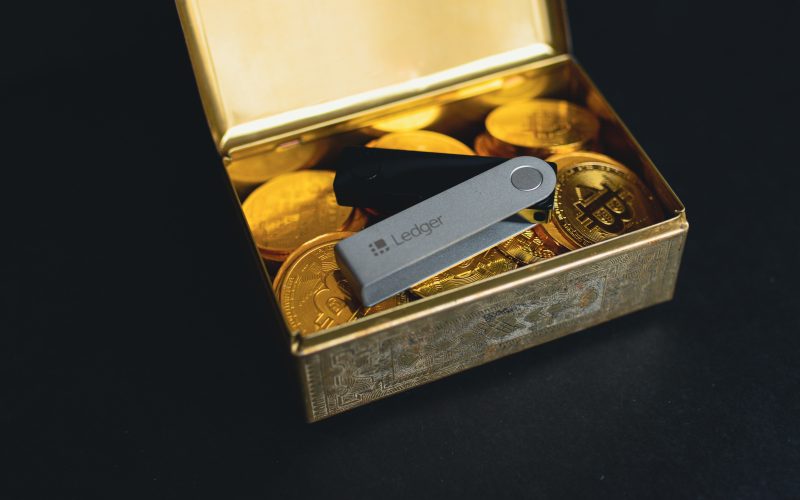In 2022, over $3.8 billion worth of cryptocurrency was stolen according to the annual Crypto Crime Report by Chainalysis, a new record high.
For investors, traders, and crypto holders, this should get the alarm bells to ring on the importance of putting proper security measures in place.
But it can sometimes be difficult to know where to begin.
Ibrahim Ajibade, a crypto expert from CryptoGmblr.com, provides the five most important steps to create a personal impenetrable “Crypto Fort Knox”.
1. Pick the Right Crypto Storage Option
The first step to keeping your crypto safe is to pick the appropriate storage option.
There are broadly four types you can choose from.
- Hot Wallets: A virtual wallet that is accessible online.
- Cold Wallets: This type of wallet holds your cryptocurrency offline.
- Paper Wallet: With a paper wallet you have a physical printout that contains your private and public keys.
- Institutional Custody Service: This is a solution where a third party is storing the crypto on your behalf.
Each solution has its own advantages and disadvantages, and the best pick will largely come down to what your needs are.
To figure that out you can ask yourself the following questions:
- Are you planning to lock away your crypto assets long-term?
- Are you an active trader that needs to move cryptocurrency around frequently?
- Do you use cryptocurrencies for everyday transactions and payments?
- Do you interact with decentralized apps across different blockchain networks on a daily basis?
2. Identify Reputable Exchanges & Service Providers
Some of the biggest crypto thefts have occurred on exchanges and trading platforms.
Make sure you only use reputable companies that are properly regulated and licensed in the jurisdiction they operate.
Do a background check on them online and see if they have a long-standing track record of being a secure operation with a good reputation and service.
3. Stay Safe With DeFi Apps & Protocols
DeFi apps and protocols are popular, but assessing the safety and sustainability of the ones you’re thinking about utilizing is important.
Here are some tips to stay safe:
- Research: Thoroughly research the team, security measures, and any past incidents or hacks before using a DeFi protocol or application. Check user feedback on forums and social media.
- Security Audits: Look for regular third-party security audits and assessments on the project’s website, whitepaper, or social media channels.
- Check Code: Check the open-source code for vulnerabilities that attackers could exploit.
- Non-custodial Protocols: Prefer non-custodial DeFi protocols to avoid giving up private keys for yield-bearing products and features.
- Reduce Permissions: Don’t assume a user-friendly interface means a safe platform. Be cautious of DeFi protocols that require extensive permissions or access to personal information.
4. Keep Your Security Hygiene in Place
Follow these baseline security steps to prevent hackers and scammers from getting an easy entry into your wallet:
- Strong Password: Use a strong password with a mix of characters and avoid personal info.
- Two-Factor Authentication (2FA): Enable 2FA on your wallet for an extra layer of security.
- Keep Your Firmware Up to Date: Install the latest wallet software updates for security patches.
- Be Cautious with Public Wi-Fi: Avoid using public Wi-Fi networks to access your wallet.
- Backup Your Wallet: Regularly back up your wallet and store the backups securely.
- Use a Secure Browser: Choose a secure and updated web browser to protect against malicious sites and phishing. Options include Google Chrome, Mozilla Firefox, and Microsoft Edge.
- Install Security Software: Protect against malware and online threats with reputable antivirus and anti-malware software. Keep the software updated and run regular scans.
- Avoid Suspicious Links: Verify links before clicking by hovering over them to see the destination URL. Enter sensitive information only on HTTPS websites for data encryption.
5. Crypto Insurance
If all fails, you can still recover your losses by ensuring you have proper crypto insurance in place.
Here are some basic types of insurance covers that you can get:
- Custodial Wallet Insurance: Protects against theft or hacking of funds held in a custodial wallet.
- Smart Contract Cover: Protects against losses resulting from smart contract failures and vulnerabilities.
- Mining Pool Insurance: Protects against losses resulting from the failure or hacking of a group of miners who pool their resources together to mine cryptocurrencies.
Comment
Ibrahim Ajibade of CryptoGmblr.com also adds:
“Online crime and fraud are unfortunate aspects of the crypto world. So it’s very important that consumers are taking appropriate steps to protect themselves against it.
A lot of scams or hacking attacks could have been prevented by following common security practices.
It’s always important to spend some time vetting the service you’re using, ensuring you have a good wallet for your needs, and that you add basic security layers like two-factor authentication.”









